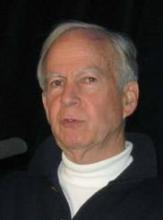SNOWMASS, COLO. – It has been a full decade since publication of the Seventh Report of the Joint National Committee on Prevention, Detection, Evaluation, and Treatment of High Blood Pressure (JNC-7), and the beleaguered authors of the still unreleased JNC-8 are taking heat over the delay.
"They’re calling JNC-8 ‘JNC-Late’ now. We hope it’ll be out in the next several months," Dr. Sidney C. Smith, a member of the JNC-8 expert panel, said at the Annual Cardiovascular Conference at Snowmass, sponsored by the American College of Cardiology.
The preliminary version of the guidelines is done. The delay has been due in large part to an unprecedented degree of prerelease review by numerous government agencies at a multitude of levels. This extensive and time-consuming advance scrutiny was instituted mainly because many health officials felt blindsided by the publication of the U.S. Preventive Health Services Task Force controversial mammography guidelines, which kicked up a hornet’s nest of criticism in the breast cancer and public health communities. Government officials don’t ever want to be caught by surprise like that again, explained Dr. Smith, professor of medicine at the University of North Carolina, Chapel Hill.
Although the prominent cardiologist wasn’t about to spill the beans regarding the recommendations contained in JNC-8, he did share the key issues the expert panel wrestled with and the general concepts that emerged. It seems clear that JNC-8 will differ in important ways from the first seven reports.
The overarching principle followed in developing JNC-8 was reliance almost exclusively upon randomized clinical trial data in fashioning solidly evidence-based guidelines. The large body of observational and epidemiologic studies suggesting lower is better when it comes to blood pressure was relegated to the backseat.
The JNC-8 panelists took as their charge the 2001 Institute of Medicine report that scathingly described a "quality chasm" in health care due to overreliance upon individual training and experience rather than scientific evidence in medical decision-making.
"They fired a shot across our bow," recalled Dr. Smith. He took the message to heart, later serving as senior author of an influential analysis of all ACC/American Heart Association guidelines published during 1984-2008. Of the 7,196 recommendations involving 22 cardiology topics, the investigators categorized only 11% as level of evidence A, while 48% were level C, meaning "based upon expert opinion" (JAMA 2009;301:831-41).
"Physicians are evaluated based on their adherence to guidelines, so it’s important to know the basis for recommendations," Dr. Smith observed at the Snowmass conference.
The JNC-8 panel, in examining the evidence for various blood pressure treatment goals in patients with hypertension, found solid, consistent clinical trial evidence for benefit with a target systolic blood pressure below 150 mm Hg. But as was highlighted in an influential review by a European Society of Hypertension task force, there are no compelling data from randomized trials to show that all patients with high blood pressure should be treated to a target of less than 140/90 mm Hg (J. Hypertens. 2009;27:2121-58).
Specifically, the European task force noted there has never been a randomized outcome trial showing clinical benefit for treating elderly patients to a target systolic BP of less than 140 mm Hg. Moreover, no clinical trials have ever enrolled elderly patients with grade 1 hypertension – that is, a systolic BP of 140-159 mm Hg; all trials in the elderly required an entry-level SBP of at least 160 mm Hg.
Similarly, the European analysis showed there is no compelling clinical trial evidence to support recommendations to lower blood pressure to less than 130/80 mm Hg in diabetic patients or those with a history of cardiovascular disease.
More recently, and consistent with that conclusion, the very large ACCORD trial showed no reduction in major adverse cardiovascular events when patients with type 2 diabetes at high risk for cardiovascular disease were treated to a systolic BP target of less than 120 mm Hg as compared to less than 140 mm Hg (N. Engl. J. Med. 2010;362:1575-85). And a subgroup analysis involving 6,400 diabetic patients with coronary artery disease in the INVEST trial showed no additional reduction in cardiovascular events with maintenance of systolic BP below 130 mm Hg as compared to below 140 mm Hg (JAMA 2010;304:61-8), Dr. Smith noted.
He outlined multiple reasons why it’s important not to intensify antihypertensive drug therapy to reduce blood pressure below the level proved beneficial in clinical trials. For one thing, growing evidence of late suggests the long-debated J-curve phenomenon does exist, and that drug regimens that reduce blood pressure to 120-125/70-75 mm Hg or below may be accompanied by an increase in coronary events. And even if intensifying antihypertensive drug therapy to below the level proved in trials isn’t harmful, then it’s not beneficial, and it’s a waste of money, a source of unnecessary exposure to the risk of side effects, and a possible contributor to reduced adherence to other medications.


